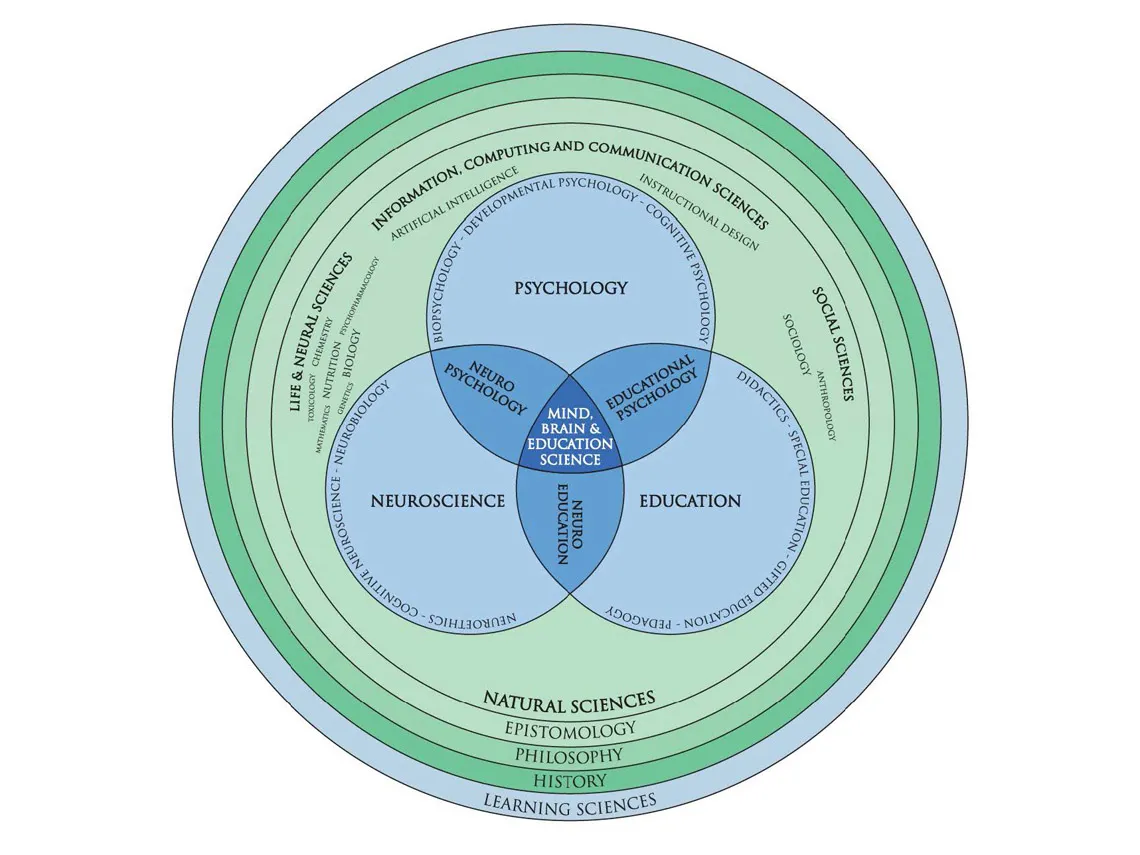Embracing the Messiness of Teaching and Learning Through Interdisciplinary Collaboration
Much has changed in education over the past few decades, and these changes have affected - and been driven by - educational research.

Much has changed in education over the past few decades, and these changes have affected - and been driven by - educational research. New fields have emerged from reconceptualizing how humans learn and how to nurture the inherently “messy” and chaotic learning process. Before the turn of the century, there were multiple distinct fields of study pertaining to human knowledge acquisition, and many of these fields still thrive today. The field of Neurology, for instance, investigates the structure and function of the human brain. Psychologists explore the science of affect, motivation, and interaction. Educational researchers of the past focused mainly on content delivery through instructional practices and curriculum development.
However, as we became increasingly aware of the complexity of teaching and learning in the late 20th century, we realized the importance of combining multiple fields of inquiry. Each distinct area of study comes with its own focus and set of goals, so looking at each separate discipline yields only part of the story. From this conclusion, the learning sciences emerged.
The New Blend: Learning Sciences
The field of learning sciences, established in 1991, went beyond the traditional principles of learning and assessment. Scholars in this new field delved into contemporary approaches that accounted for social interaction and innovative technology use (Fusco, Roschelle, & Ruiz, 2020). They also adopted a more applied approach than their predecessors, investigating the learning process within its authentic settings and using a systems approach to analyze data rather than inspecting each instructional component (i.e., instructional materials, classroom technology, assessments, teacher training, etc.) in an isolated fashion.
Below, Sawyer (2008) reflects on some of the most important findings from the learning sciences since its inception.
- The importance of deeper conceptual understanding: Knowledge of facts and procedures alone is not sufficient; the application of this knowledge across a variety of authentic situations is key.
- Focusing on learning in addition to teaching: “Learning sciences research is revealing the deeper underlying bases of how knowledge construction works” (p. 2).
- Building on prior knowledge: New learning occurs as the extension of foundational knowledge.
- Reflection: Learning is more effective when learners communicate their learning processes.
- Scaffolding: Support tailored to students’ needs allows students to build on existing knowledge.
The Next Evolution: Mind, Brain, and Education
Around 2001, about a decade after the commencement of the learning sciences, the Mind, Brain, and Education field grew to prominence. This field could be considered the next evolutionary step in the science of teaching and learning. Its main defining feature is that it contains neither subfields nor primary field. With most blended fields, like Educational Psychology, the field listed first (i.e., Education) is the subfield, and the field listed second (Psychology) is the primary field. In contrast, all fields included in Mind, Brain, and Education (MBE) research are of equal importance, thus creating a truly multidisciplinary field of inquiry. Unlike learning sciences, the focus of MBE is not just on learning or teaching but on the constant interplay between these two processes. MBE explores how these teaching and learning work iteratively to create understanding in the human mind.

Tokuhama-Espinosa, T. (2019). Five pillars of the mind: Redesigning education to suit the brain. New York, NY: W.W. Norton.
MBE integrates the psychological perspective by exploring the individual context and learner differences while accounting for social interaction and the basic neuroscience of learning (i.e., how the brain creates neural networks during the learning process). Furthermore, it does not assume that researchers only inform teachers through their findings but also that teachers offer scientists insight into their daily realities, thus informing the generation of new theories (Tokuhama-Espinosa, 2017).
Central to both MBE and the learning sciences are applied research methods. The inquiries from these fields are not amenable to cause/effect lab situations. They need to be considered within the context in which teaching and learning is naturally situated. Both fields draw from a variety of disciplines and afford opportunities for teachers to apply new findings to their own practices.
Interdisciplinary & Applied – It Takes a Research Community
After nearly 125 years of educational research, there is consensus that multiple perspectives and disciplinary backgrounds are needed to answer the question “How can I teach to best serve my students?” UCATT is an office with teaching and learning experts from diverse academic backgrounds who are all dedicated to serving UArizona’s instructors. We apply our collective body of knowledge and expertise not only to our consulting practices but also to our collaboration on education-focused research initiatives, including being written into both internal and external grants. For more information on how we can support your research endeavors, please visit UCATT’s Research Support page. The main take-home message? Educational research thrives when it is applied, collaborative, situated, and interdisciplinary!
References
Fusco, J., Roschelle, J., & Ruiz, P. (2020, March 10). What is Learning Sciences and Why Does It Matter? Digital Promise.
Sawyer, R. K. (2008). Optimising learning implications of learning sciences research. Innovating to learn, learning to innovate, 45, 35-98.
Tokuhama-Espinosa, T. (2017). The difference between Mind, Brain and Education, Educational Neuroscience and the Learning Sciences. Conexiones The Learning Sciences Platform.


